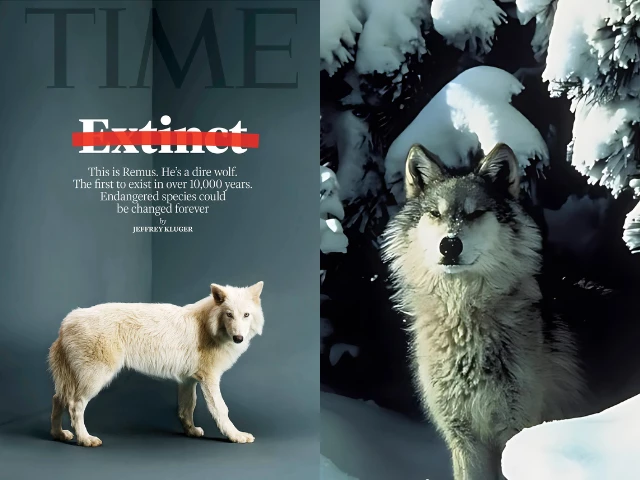The true story behind TIME magazine cover celebrating de-extinction of dire wolves using ancient DNA
New wolves with prehistoric traits are being hailed as dire wolves reborn but the science tells a different story.

TIME magazine’s latest cover features a striking image of Romulus, a genetically engineered wolf designed to resemble the extinct dire wolf, which disappeared over 10,000 years ago. The image accompanies a report on Colossal Biosciences’ latest scientific project involving ancient DNA and gene editing.

Photo: TIME
The dire wolf, which disappeared over 10,000 years ago, left behind fossilised remains across North and South America. From these remains, Colossal extracted DNA dating between 13,000 and 72,000 years old. Scientists analysed the genetic material and identified 14 key genes linked to the dire wolf’s distinctive features—muscular build, skull shape, powerful jaws, and pale coat colour.
These genes were edited into the DNA of modern grey wolves using CRISPR technology. The modified embryos were implanted into domestic dogs, resulting in three live births between October 2024 and February 2025. The pups—Romulus, Remus, and Khaleesi—were delivered by caesarean section.
Now six months old, the pups each weigh around 80 pounds and are expected to grow significantly larger. They are currently kept within a secured 2,000-acre ecological preserve and fed a natural diet of deer and beef. Despite being hand-raised, they show strong wild instincts, including avoidance of human interaction.
Although they physically resemble dire wolves, the animals are genetically altered grey wolves, not restored members of the extinct Canis dirus species. The complete dire wolf genome has not been sequenced and was not reconstructed for this project.
In simple terms, the animal on TIME magazine's cover only phenotypically resembles what scientists believe dire wolves looked like.
Colossal states the purpose of the project is to advance tools for conservation and ecological restoration. Similar projects are underway targeting the woolly mammoth, dodo, and Tasmanian tiger.





















COMMENTS
Comments are moderated and generally will be posted if they are on-topic and not abusive.
For more information, please see our Comments FAQ